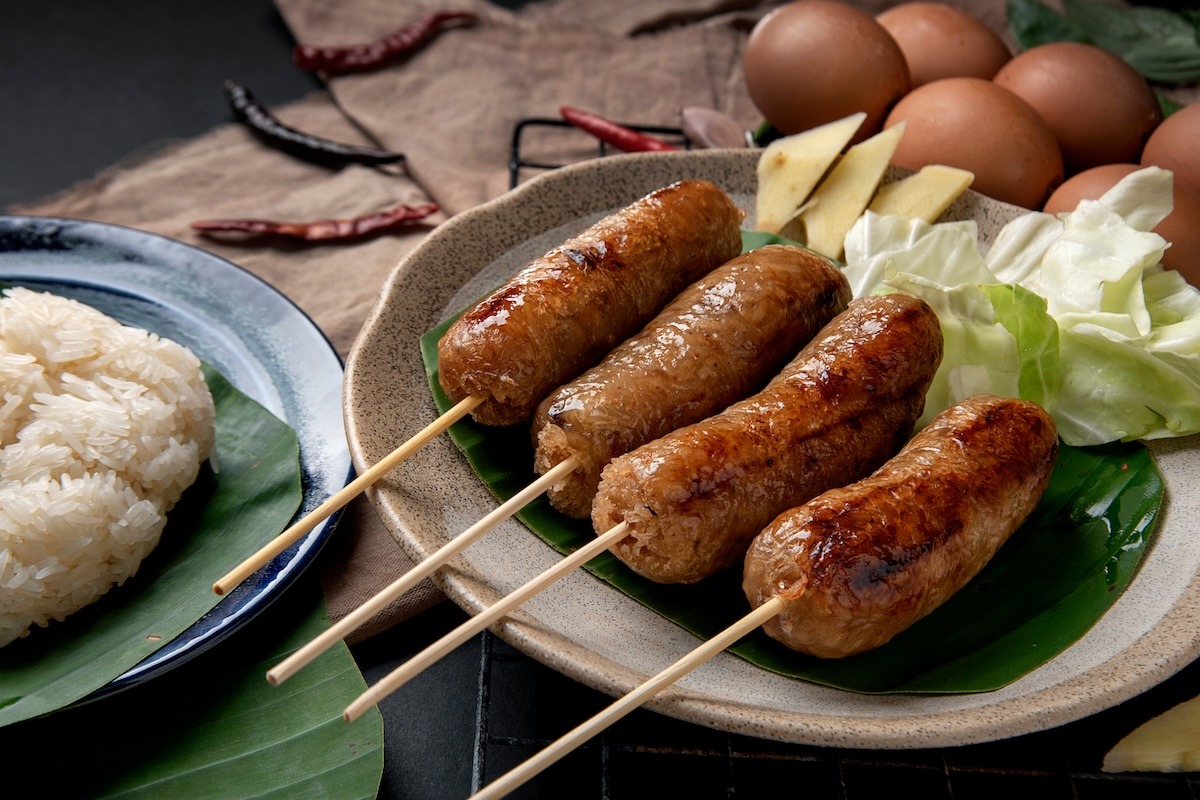Northeastern Thailand, known as Isaan, is a region celebrated for its robust and spicy culinary offerings. The flavors of Isaan cuisine are a delightful blend of spicy, sour, salty, and bitter, often accompanied by the staple sticky rice. This guide will take you through the must-try dishes, cooking techniques, and the cultural essence that makes Isaan food a standout in Thai cuisine.
A Culinary Tour of Isaan
1. Larb Moo (Minced Pork Salad)
An essential dish in Isaan cuisine, Larb Moo is a minced pork salad that bursts with bold flavors. The combination of ground pork, roasted rice powder, lime juice, fish sauce, and herbs such as mint and cilantro makes it a refreshing and zesty appetizer or a light meal. There are other variations using chicken or beef, and all are equally delightful.
3. Sticky Rice (Khao Niew)
Sticky rice is a staple in Isaan cuisine, often served as an accompaniment to main dishes. The glutinous nature of sticky rice makes it perfect for soaking up the vibrant flavors of Isaan dishes. It’s traditionally eaten with hands, forming small balls to scoop up bites of spicy salads and grilled meats.
3. Som Tum (Papaya Salad)
One cannot talk about Isaan cuisine without mentioning Som Tum, the world-famous spicy papaya salad. Made with shredded green papaya, tomatoes, long beans, peanuts, and a mix of fish sauce, lime juice, chilies, and palm sugar, Som Tum offers a perfect balance of flavors. Variations of this dish might include salted eggs, dried shrimp, or fermented fish sauce to add an extra layer of complexity.
4. Gai Yang (Grilled Chicken)
Gai Yang is a simple yet flavorful grilled chicken dish that’s marinated with garlic, coriander root, fish sauce, and lemongrass before being grilled to perfection. Often served with a tangy dipping sauce made from chilies, garlic, and lime juice, Gai Yang is a popular street food as well as a staple at family gatherings and celebrations.
The Essence of Isaan Cuisine
Isaan cuisine is characterized by its use of fresh and local ingredients. Dishes often feature an abundance of fresh herbs, vegetables, and spices. The liberal use of ingredients like chilies, lime, galangal, and lemongrass sets Isaan dishes apart from other Thai regional cuisines, creating a unique taste experience that is both vibrant and intensely flavorful.
In addition to the flavors, the methods of preparation in Isaan cuisine also play a crucial role. Grilling and roasting are common techniques, imparting a rustic and smoky flavor to meats. Fermented ingredients like fish sauce and pickled vegetables give Isaan dishes their distinctive pungent aromas.
Signature Dishes and Ingredients
1. Larb (Spicy Minced Meat Salad)
Larb is another iconic dish from Isaan. Larb can be made with a variety of meats including pork, chicken, beef, and even fish. The minced meat is mixed with toasted rice powder, chili flakes, lime juice, fish sauce, and a generous helping of fresh herbs such as mint and cilantro. It is typically enjoyed with sticky rice and fresh vegetables.
2. Nam Tok
Nam Tok is a dish made with grilled pork or beef that’s thinly sliced and then tossed with shallots, herbs, lime juice, fish sauce, and roasted rice powder. Literally translated as “waterfall,” the name refers to the juices that drip from the meat during grilling. This dish is a perfect example of the bold flavors that define Isaan cuisine.
3. Pla Ra (Fermented Fish)
An ingredient unique to Isaan cuisine is Pla Ra, a fermented fish sauce that adds a pungent, umami flavor to many dishes. While its strong aroma might be an acquired taste for some, it is an essential component in traditional Isaan cooking. It’s often used in Som Tum and other local salads.
4. Sai Krok Isaan (Isaan Sausage)
Sai Krok Isaan is a fermented sausage made from pork and rice. These sausages are slightly sour from the fermentation process and are usually grilled and served with fresh cabbage, ginger, and chilies. They make for a perfect snack or appetizer, showcasing the rustic flavors of Isaan.
Experiencing Isaan Culture Through Food
To truly experience Isaan cuisine, one must delve into the culture and traditions of the region. Food in Isaan is more than just sustenance; it’s a reflection of the region’s way of life. Meals are often a communal affair, with families and friends gathering to share dishes laid out on a large bamboo tray.
Street food plays a significant role in Isaan culinary culture. From bustling markets to roadside stalls, the vibrant street food scene offers a glimpse into the everyday life of the locals. Here, you can find a diverse array of freshly prepared dishes that highlight the bold and adventurous flavors of the region.
Cooking Techniques and Traditions
Isaan cuisine is known for its simple yet effective cooking techniques. Grilling and smoking are common methods, often done over charcoal for an authentic smoky flavor. Steaming is also a popular technique, particularly for fish and sticky rice.
Fermentation is another cornerstone of Isaan cooking. Fermented fish, sausages, and vegetables are staples in many households, providing a distinct taste that is integral to the cuisine’s identity.
Culinary Schools and Workshops
For those interested in mastering the art of Isaan cooking, there are several culinary schools and workshops available throughout Thailand. These programs offer hands-on experience in cooking traditional Isaan dishes, providing valuable insights into the ingredients and techniques that make this cuisine unique.
Participating in a cooking class is not only a great way to learn, but it also offers an immersive cultural experience. You’ll have the opportunity to visit local markets, source fresh ingredients, and understand the significance of each dish within the Isaan community.






















